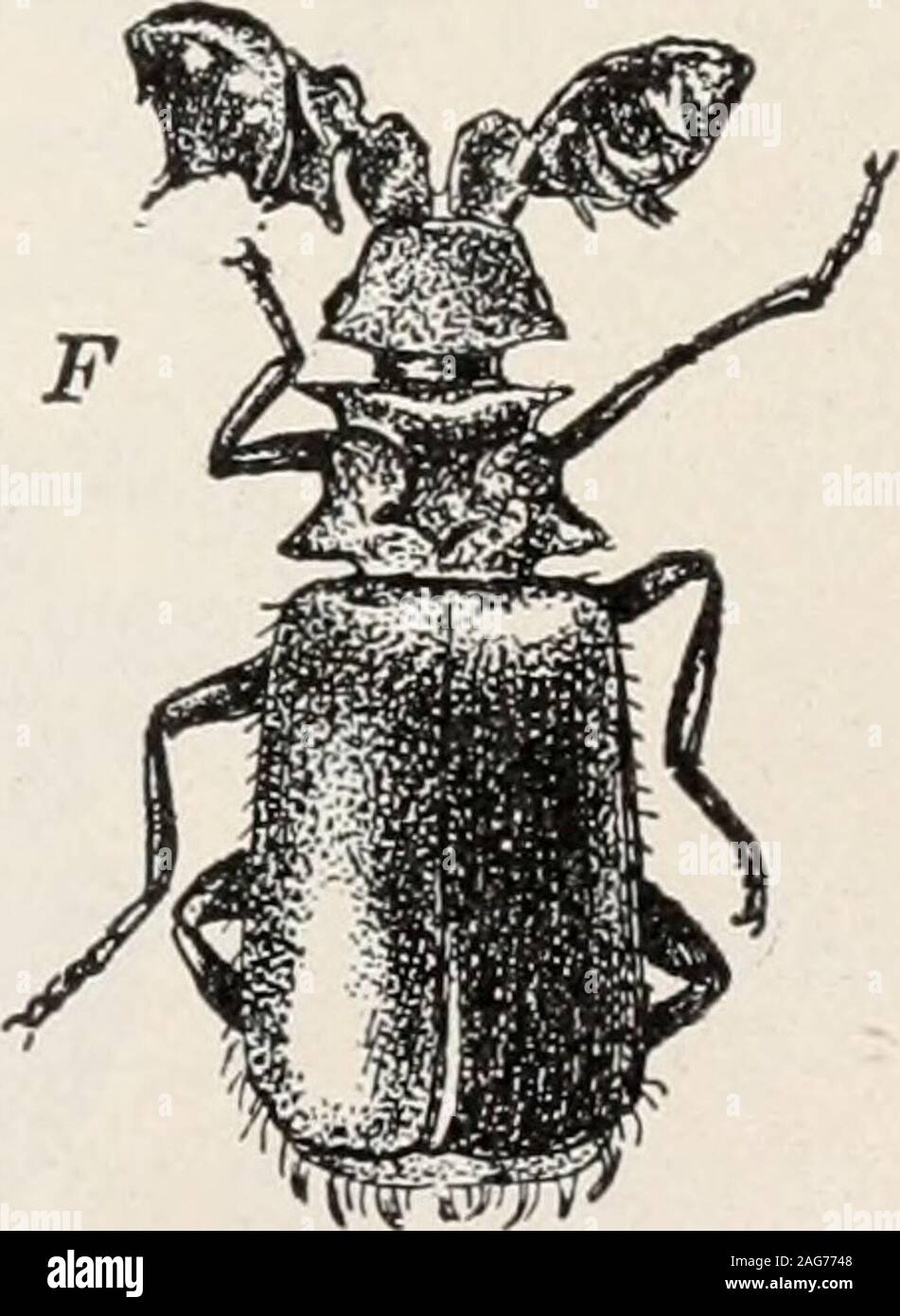. Ants; their structure, development and behavior. FIG. 236. Various species of Paussiche. (Wasmann.) A, Pleuroptenis brevi-cornis; B, Paitssus hova; C, Pentaplatartlints natalensis; D, Paussi/s daina; E,Lebioderus goryi; F, Panssns spiniceps. trichodes) which are assiduously licked by the ants, and much has beenmade of these structures by Wasmann, who regards them as the mostcharacteristic organs of symphiles. He has shown that they are borneby the chitinous integument at points or depressions where clusters ofunicellular glands open, and that they have the important function ofrapidly diffus

Image details
Contributor:
The Reading Room / Alamy Stock PhotoImage ID:
2AG7748File size:
7.1 MB (260.1 KB Compressed download)Releases:
Model - no | Property - noDo I need a release?Dimensions:
1352 x 1847 px | 22.9 x 31.3 cm | 9 x 12.3 inches | 150dpiMore information:
This image is a public domain image, which means either that copyright has expired in the image or the copyright holder has waived their copyright. Alamy charges you a fee for access to the high resolution copy of the image.
This image could have imperfections as it’s either historical or reportage.
. Ants; their structure, development and behavior. FIG. 236. Various species of Paussiche. (Wasmann.) A, Pleuroptenis brevi-cornis; B, Paitssus hova; C, Pentaplatartlints natalensis; D, Paussi/s daina; E, Lebioderus goryi; F, Panssns spiniceps. trichodes) which are assiduously licked by the ants, and much has beenmade of these structures by Wasmann, who regards them as the mostcharacteristic organs of symphiles. He has shown that they are borneby the chitinous integument at points or depressions where clusters ofunicellular glands open, and that they have the important function ofrapidly diffusing some aromatic secretion. Glands of a similar type, from which the trichomes may have developed, are present in many 400 AXTS. iionmyrmecophilous in.sccts, c. y., the epinotal glands of the ants them-selves, the dorsal jJan.U of the Blattidae, the scent glands of Lepidop-tera. etc. asmann states that the secretion is not liquid, but volatileor etherial, perhaps a fatty ether. The ants are so inordinately fondof it that he believes that it mus